Single-color fir: an overview of the best varieties and growing rules
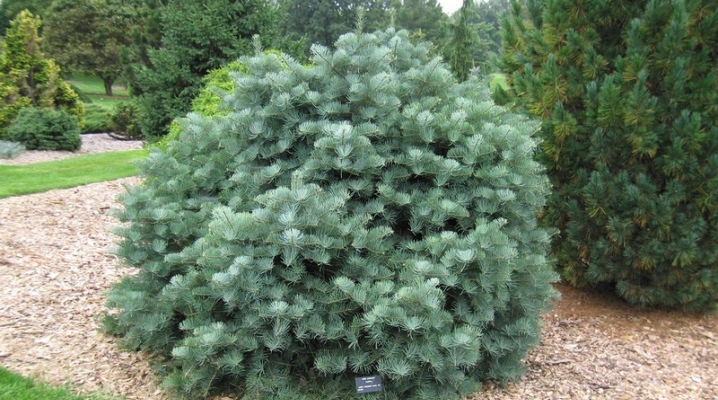
Monochrome fir is often used in landscape design due to its unpretentious care, fluffy branches and frost resistance. The culture has several varieties that differ in their appearance.

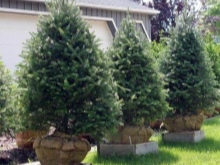
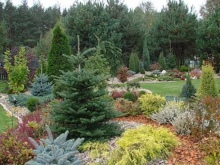
general characteristics
The solid fir, also often called concolor, is native to North America. This perennial has a spreading crown and in natural conditions sometimes reaches 40-60 meters. The bark of the tree is rather rough and covered with vertical cracks. Its main color is light green, but there is also an admixture of gray tones. The crown itself has a neat conical shape and at the bottom reaches sufficient latitude.
The branches look horizontally. They are covered with large thornless needles, reaching a length of 6 centimeters. The needles are colored in a mixture of gray and blue-green tones and have a lemon scent. The needles form two rows and are arranged horizontally. Purple cones grow up to 11 centimeters long. They are oval and vertical.
The formation of "fruits" occurs once every 3 years.
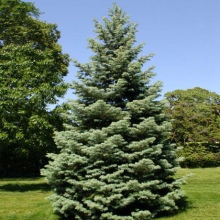
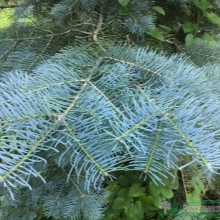

Monochrome fir is not afraid of either drought or drafts, but it feels best in temperate climates. In addition, the ephedra can easily tolerate the low temperatures of the winter months. The buds of the tree open only after the return of frost is impossible. The culture, in principle, does not impose special requirements on the condition of the soil, and therefore it can develop both on saline soil and on loam. However, the most successful solution is considered to be the use of deep sandy loam.
Since the plant is light-loving, it should be planted in an open area. Until the 6th year of life, the development of culture is slow, then there is a leap, and at the age of 15 it reaches its maximum height. Under natural conditions, the lifespan of monochromatic fir can reach up to 320 years or more. By the way, there are two varieties of cones on the tree - female and male. The males look duller and appear on last year's shoots, while the females have a bright reddish tint and are placed on top of the fir. The concolor rhizome extends deep into the soil, which allows the plant to survive in dry seasons and not be affected by strong winds.
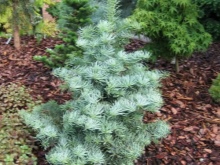
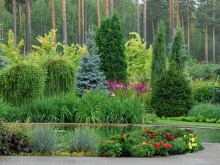
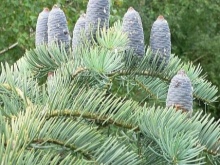
Description of varieties
Fir varieties used in landscape design do not differ in special height, but they have a decorative crown of different colors. Some of them reach 9 meters, and some are dwarf species. The monochromatic fir Violacea grows up to almost 8 meters. Her crown is fluffy in the form of a narrow pyramid, and the needles are painted in a beautiful shade of steel with blue. As the tree develops, the lower branches lengthen, forming a base of large diameter.
The bottom row of branches is practically on the ground. The needles of the Violacea variety are soft, 6 cm, with a square tip. The buds reach a length of 13 centimeters. At first they are colored green, but over time they turn dark red.
This fir, like its “relatives”, is not afraid of frost and loves an abundance of light.

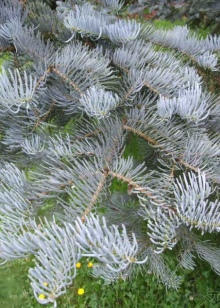
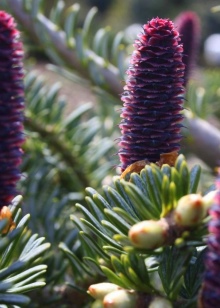
Single-color fir "Compact" grows only up to 60 centimeters. She feels best in a temperate climate, but she also tolerates low temperatures quite well.The fluffy crown resembles a rounded cylinder, it develops unevenly. The long needles have a beautiful dark silvery shade and are quite stiff. Rounded cones do not exceed 3 centimeters in diameter. They have a green-yellow tint and are resinous. Thick branches grow at an angle and quite often create 2 vertices. The plant grows only by 3 centimeters per year.
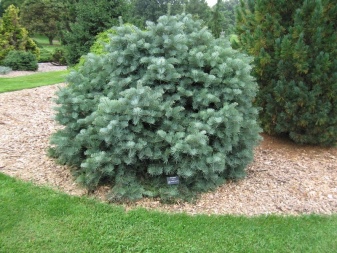
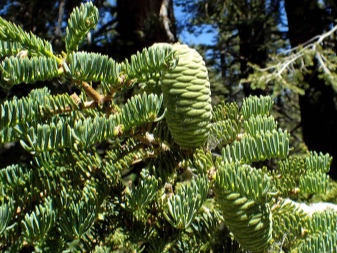
Archer's Dwarf monochromatic fir grows up to 1 meter in height, and the volume of the crown, as a rule, is 70 centimeters. The cone-shaped crown grows very lush and colored in a beautiful blue-green hue. Thin needles 75 millimeters long have a beautiful rounded tip. Both the trunk and the branches have a dark ash tone. Rounded buds stretch up to 15 centimeters, making up only 6 centimeters wide.
Their color changes over time from green to brown.
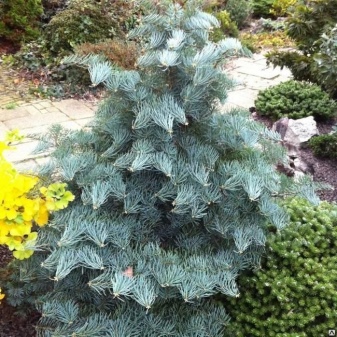
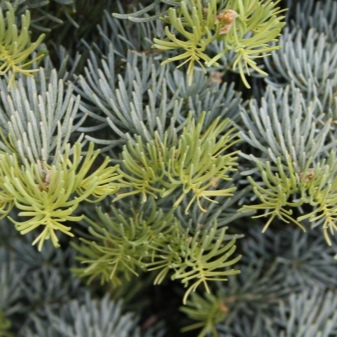
Fir "Glauka" refers to dwarf trees. Thick needles hardly reach 2.5 cm. The variety is considered very beautiful, but its qualitative development is possible only in the southern regions, taking into account the obligatory protection from the winds.
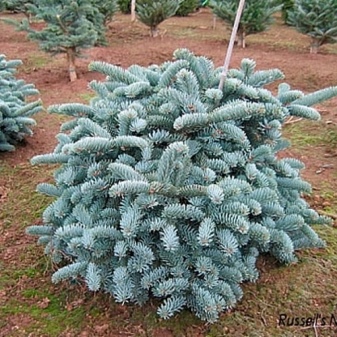
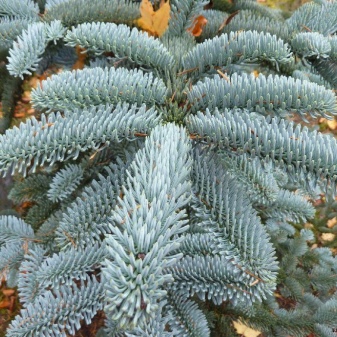
The Wintergold fir reaches a height of 15 meters and its needles are 7.5 cm in length. The yellow-green color of the needles explains the unusual name of the variety.
Despite the fact that Wintergold has good frost resistance, it is quite demanding on the composition of the soil and does not tolerate high humidity.

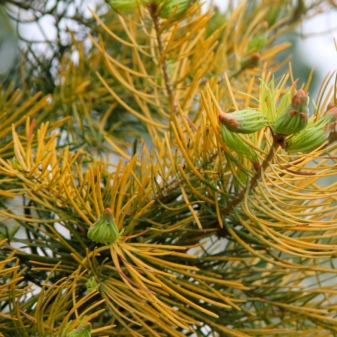
Landing features
Before planting trees, the site will need to be dug up and fed with complex mineral fertilizers. The hole is pulled out approximately 3 weeks before the actual planting. The pit should be 85 centimeters deep and 60 centimeters wide. In general, the exact parameters are determined depending on the actual volume of the rhizome. A drainage layer of small pebbles or gravel forms at the bottom.
Clay, sand and sawdust are mixed, enriched with nitroammophos, after which half of the entire volume of the cavity is filled with the resulting mixture. Further, there is abundant irrigation and direct planting of a seedling whose age exceeds either 4 years or 2 years - in the case of a layering or an already rooted cuttings. First, the dried and spoiled roots should be removed from the fir seedling, and also kept for about half an hour in a solution of potassium permanganate. The procedure itself is carried out in April or May, landing in September is possible. A hill is formed in the center of the hole, a seedling is located on it, the roots are neatly laid out in the hole, and everything is covered with an enriched soil mixture. It is imperative to keep the root collar at a height of 6 centimeters above the surface, tamp the earth slightly, and water everything with high quality.
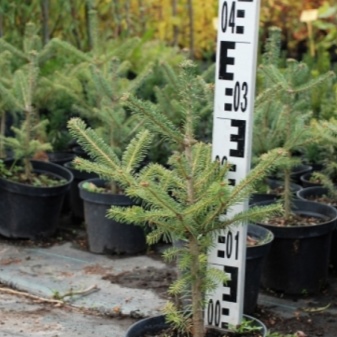
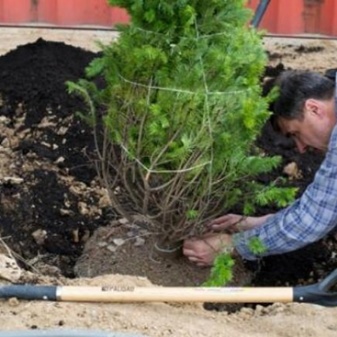
Care rules
It is better to water young fir trees using the sprinkling method, carrying out the procedure 1 time in 2 weeks. If the amount of natural precipitation increases, then there is no need to water the fir additionally. An adult plant does not require watering, since all the necessary moisture comes from the soil. Fertilizers should be applied in the third year before the juice begins to move. In addition, the use of mineral complexes is not prohibited in the fall.
For young solid-colored fir, loosening is especially important, which contributes to a better supply of oxygen to the roots. Weeding is carried out as needed, aiming to remove the weeds along with the roots. Mulching the space is carried out immediately after planting. In autumn, the protective layer increases, and in spring it is renewed. As a rule, sawdust, peat and tree bark are used for this purpose.
Special pruning of a single-colored fir is not required, therefore, the crown design is carried out only to form an unusual design. In the spring, it makes sense to carry out sanitization by removing dry and spoiled branches.Approximately 14 days before frost, an adult fir must be subjected to water-charging irrigation, and a young tree must be additionally mulched.
In case of low temperatures, spruce branches or other suitable material is used.
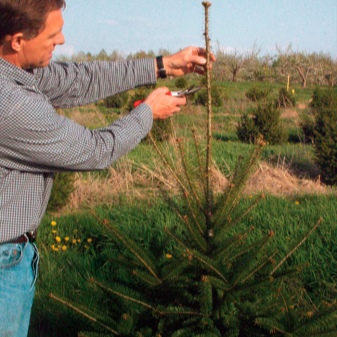
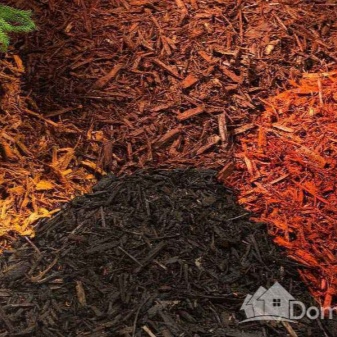
Reproduction methods
For reproduction of single-color fir, either the seed, cuttings, or layering method is chosen. Seeds are rarely used, as not all plants are capable of retaining maternal characteristics. Therefore, the use of cuttings or cuttings is considered a much better option. If the lower branches are located close to the surface, then they are able to take root on their own, and it will be enough only to cut off the layers in the spring and transplant it to the required place. Cuttings are cut in early spring from one-year-old shoots, maintaining a length of 7 to 10 centimeters.
Rooting of cuttings takes place over a couple of years, after which they can be transplanted into open ground.

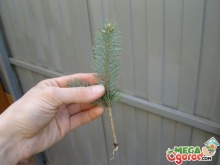
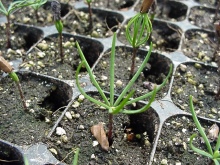
Diseases and pests
Most often, a single-colored fir suffers from fungal diseases that lead to decay of the root system. Spoiled roots are accompanied by yellowing and falling needles. If the disease is noticed on time, then the fir will need to be promptly treated with "Fundazol". Otherwise, the tree is cut and removed from the site. Of the pests on fir, the hermes aphid is usually parasitic, the larvae of which eat the needles. When a problem is detected, the damaged fragments are cut off, the tree is treated with insecticides, and all shoots are treated with copper sulfate. To fight the spider mite, you will need Aktofit.
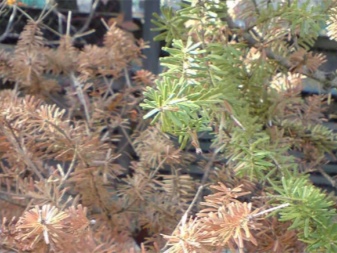
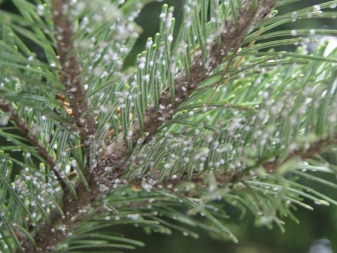
Examples in landscape design
In landscape design, one-color fir is used to solve many problems. Plants are chosen for the decoration of alleys, walking or entrance areas. A single plant can become the central part of a flower bed or a bright accent of a floristic composition.
Quite often, single plants are placed next to a monument or sculpture. Dwarf variations easily become an appropriate component of an alpine slide, rock garden or gazebo.
Experts recommend combining several varieties of fir, observing color compatibility and soil requirements for planting.
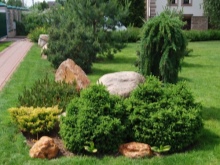
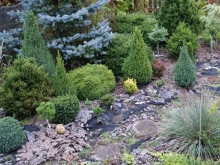

For a description of one-color fir, see below.



































































The comment was sent successfully.